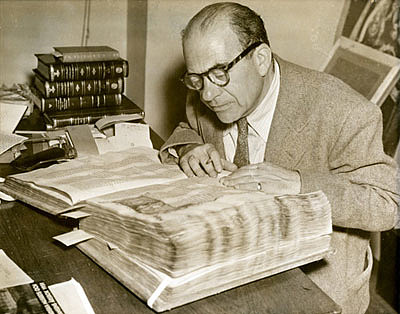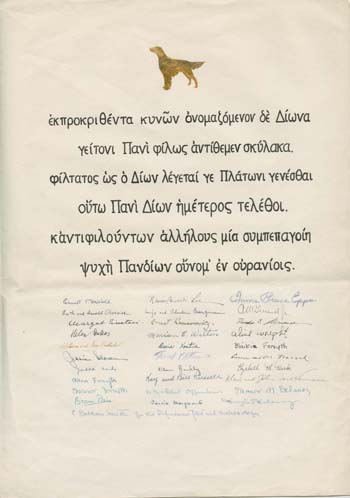Erwin Panofsky: Life, Work, and Legacy
Born in Hannover, Germany in 1892, Panofsky matriculated at the universities of Munich and Freiburg before receiving his D.Phil. in 1914 from the University of Freiburg. Afterwards, he continued to study art history in Berlin. In 1916, he married Dora Mosse, eight years his senior. They had two sons, Hans (1917–88) and Wolfgang (1919–2007). Hans became a professor of atmospheric sciences at Penn State and Wolfgang was a physics professor at Stanford University.

Panofsky was named a Privatdozent at the newly founded University of Hamburg in 1921, serving as its first full professor in art history from 1927. From 1931 to 1934 he was a Visiting Professor of Fine Arts at New York University, spending alternate terms in New York and at the University of Hamburg, until his tenure there came to an abrupt end, when he was dismissed from his Hamburg position upon the enactment of the new Nazi laws in April 1933. In an account of his experience of immigration to America, he wryly observed that the cable notifying him of the dismissal was sealed with “Cordial Easter Greetings, Western Union.”
With Jews being forced out of academia and no opportunities on the horizon in Germany, Panofsky moved to the United States. However, rather than abandon three of his graduate students who were Jewish and at an advanced stage in their doctoral dissertations, Panofsky returned to Hamburg in the summer of 1933 to supervise the completion of their dissertations and give them the required oral examinations. Panofsky recognized the manipulative situation in which he was placed, but he refused to go along completely. Breaking the fundamental rules of academia, he agreed to help the students only if it occurred outside the walls of the university. This way, Panofsky was able to assist the students in obtaining their degrees before it was too late, but because he refused to set foot in the university that had suspended him, they worked out of Panofsky’s apartment.

In 1934–35, Panofsky taught at Princeton University and the Institute of Fine Arts at NYU, something he continued to do until the end of his life. In 1935, the Institute for Advanced Study invited Panofsky to join its Faculty. His work at the Institute attracted other art historians, including Jan Bialostocki, Louis Grodecki, Jan van Gelder, and Léon Delaissé.
Dora Panofsky began publishing late in life. She worked with her husband on Pandora’s Box, The Changing Aspects of a Mythical Symbol (Pantheon Books, 1956), whose title was a pun on their names. Dora died in 1965 following a long illness.
Panofsky, who held emeritus faculty status by this time, married the art historian Gerda Soergel in June 1966. A scholar in her own right, Gerda Soergel Panofsky has published widely, both before and after her marriage. Among her books are Michelangelos “Christus” und sein römischer Auftraggeber (Römische Studien der Bibliotheca Hertziana), (Wernersche Verlagsgesellschaft, 1991), and Rheinisch-Bergischer Kreis, 3 vols. (Schwann, 1972).
A lifelong lover of dogs, Panofsky was surprised when the entire Institute community got together to get him an Irish Setter puppy after his previous dog died. He was presented with a scroll in Greek, with the signatures of all the community members who participated in the gift. The poem, translated into English, reads:
To Pan our neighbor this selected pup
Dion yclept we fondly offer up.
Dion was Plato’s dearest love, ye know,
So may our Dion to Pan’s darling grow;
And may one soul compact of mutual love
Be named Pandion by the gods above.
In 1962, at the same time he received emeritus status at the Institute, Panofsky was appointed Samuel Morse Professor of Fine Arts at NYU. He died on March 14, 1968, at the age of 75.